|
Additional Support Computer Systems Game Consoles |
From the PS3 XCrossMediaBar (XMB) main screen, or 'Home Menu', select Network Settings and click the ![]() button.
button.
Select Internet Connection Settings and click the ![]() button again (fig.1).
button again (fig.1).
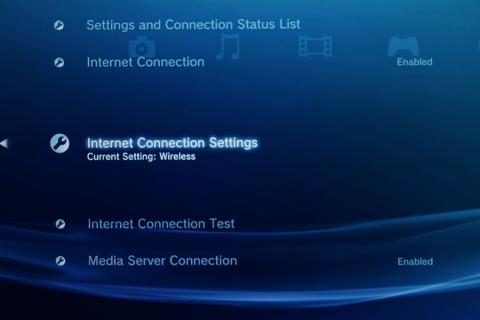
Select Custom (fig 2) and click the right button. You will now be taken through the steps for manual configuration of the internet settings. I would advise configuring things manually rather than the Easy way of letting it detect things automatically for you, because this will make configuring your firewall and/or port forwarding easier later on.
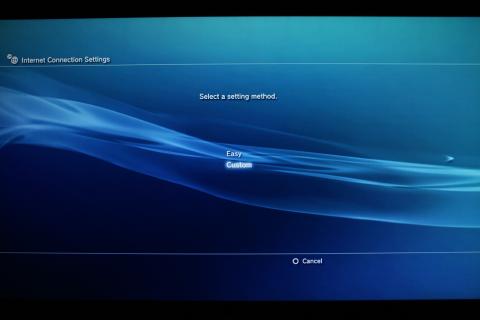
Select Wireless and then click the right arrow button. (see separate instructions for connecting via a wired connection)
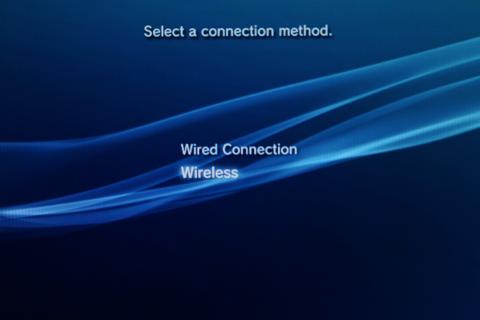
For wireless connections, it's generally best to set things up manually. That way you have a better idea of what you're doing and the process involved, and you can also have a bit more control about the way things are configured. Highlight Enter Manually and click right to continue.
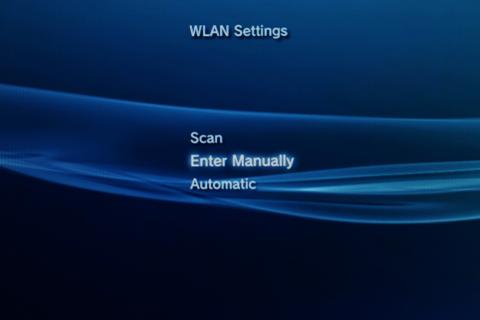
Next, you'll be asked for the SSID of the wireless access point you wish to connect to. This should be the name of your wireless router so you should have it from when you configured your wireless originally. Enter it in the box provided (fig. 5)

Next you need to select the type of security your wireless router is using.
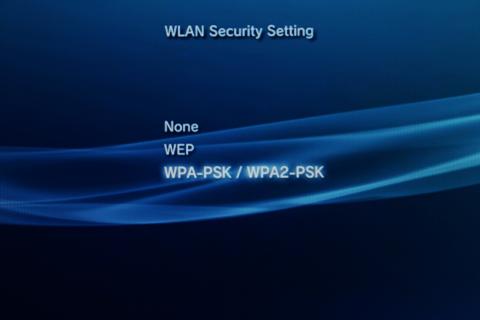
WEP encryption is the older standard and a bit more widespread, especially with older routers and offers 64 bit or 128 bit encryption (of which 128 is the best, and recommended). The alternative is WPA encryption. This is more secure than WEP and is probably recommended for current installations, as long as all your devices support WPA (some older computers and laptops don't).
N.B. The PS3 doesn't appear to support the TKIP algorithm for WPA encryption, so you may find it doesn't like some older routers. If this is the case, try upgrading the firmware in your router to a newer standard, such as AES. See the problems section below for more info on this.
Whichever method you select, you then need to enter the passphrase or 'encryption key' (fig.7) which you can do with a keyboard or the onscreen display.
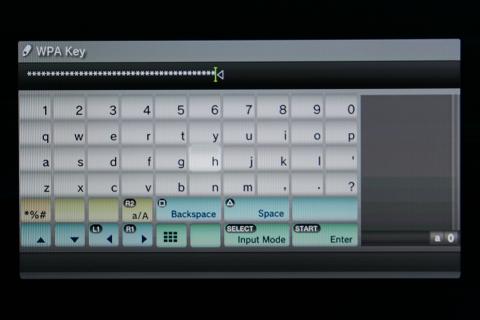
The key usually consists of a sequence of 'random' characters or 'hexadecimal' codes. Enter the code EXACTLY as per your router configuration. The key is case sensitive, so make sure you don't accidentally muddle upper and lowercase letters.
Once you've entered the code, click enter and your key will appear as a short sequence of * characters (for security) (fig.8). This may look shorter than the code you entered. Don't worry. This is simply displayed like it for security purposes to prevent other people seeing your key sequence.

Click right to continue. The rest of the setup is now pretty much the same as for a wired connection, and involves setting up your IP address and various other parameters. Again, I'd recommend setting a manual IP address, which gives more control and is probably better for gaming.
Highlight Manual and click right to continue.
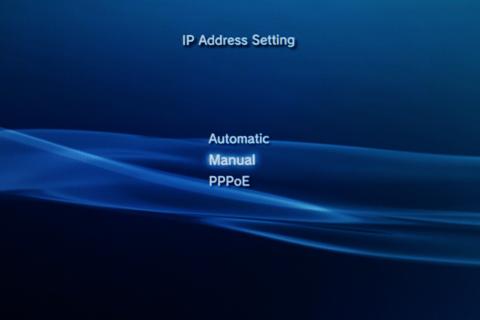
You will now see a screen from where you can manually setup your network IP addresses (see fig.10). Enter the IP address that you want to configure your PS3 on. In our example we've used 10.1.1.54 but yours should be a static IP address on your LAN network (maybe 192.168.1.x or something?). Enter the Netmask which will generally be 255.255.255.0 unless you have a different one for your own network.

The default router should be the IP address of your broadband router or internet gateway. Then enter the domain name servers (DNS) as shown in the screenshot. For Orpheus broadband, these are 213.130.128.32 and 213.130.128.33
Click on the right button to continue.
For MTU select Automatic and click right to continue.
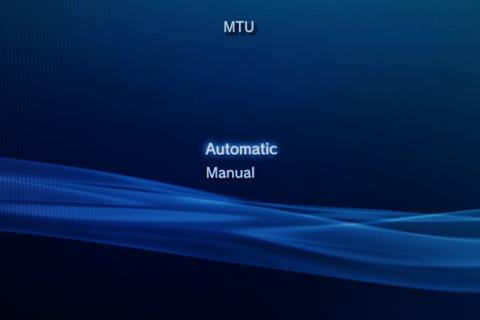
For Proxy Server select Do Not Use and click right to continue.

For UPnP select Enable (fig.5). Some routers don't support 'Universal Plug and Play', in which case the PS3 should ignore it anyway. Click right to continue.
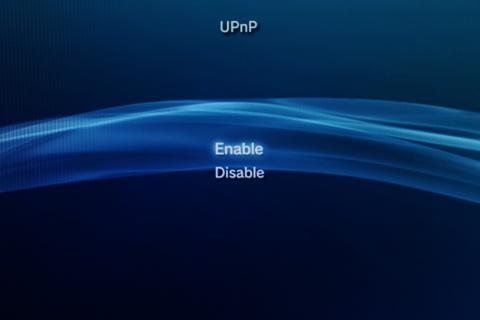
You'll now be shown a list of all the settings you've chosen. If everything is correct press the ![]() button to save the settings.
button to save the settings.
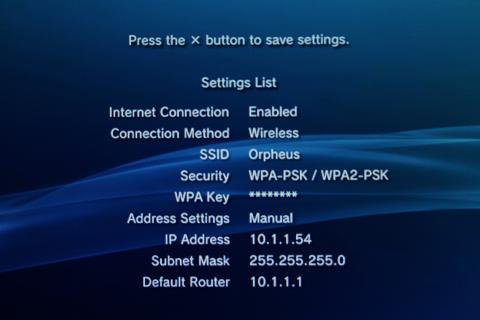
Save completed! Now click on Test Connection to make your PS3 perform a network test to see if everything is working ok. If all is well you should see figure 15.
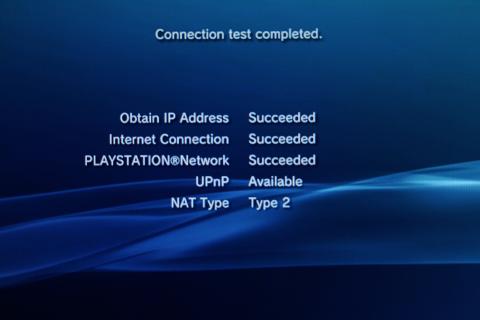
The test should indicate that you have NAT Type 2 which means that online services should all work. If so, you're done! See the problems section below if you don't get this, or you get an error.
Your PS3 should now be configured for going online, accessing the Sony Shop and joining your favourite online games.
When you first run the connection test and your PS3 is trying to obtain an IP address, it may fail with a confusing error message (fig.16), asking you to check your router settings.
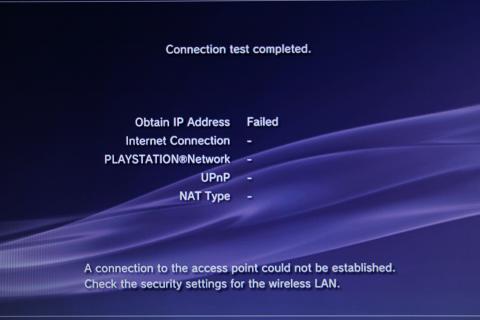

This error is caused by an incompatible encryption algorithm in use. It could indicate that you've made a mistake in the setup above, but usually it indicates that your wireless router is incompatible with the PS3s wifi ability. The example screenshots here were because our router was set to WPA encryption but the algorithm in use was TKIP rather than AES. Luckily, in our case the problem was resolved when we flash upgraded the firmware in the router - as fig.15 shows.
Thus, before you consider buying a new wireless router, check that you have the latest firmware in the router. You should contact your original supplier or the router manufacturer to confirm this.
Another problem you may encounter is when testing connection to the Playstation Network, resulting in a DNS error (code 80710102). This is generally caused by the firewall in your router blocking certain ports which are required for the PS3 (see fig.18)
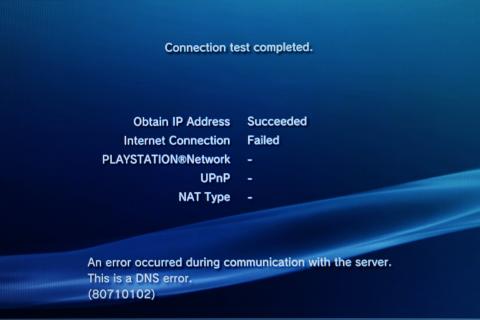
If you get this error, use your PC to examine your router firewall settings and ensure that UDP destination ports 3478 and 3479 are open. These ports are known as "STUN" and are required in order to connect to the Playstation Network.
Other PS3 error codes are detailed on Paul Vigay's PS3 support site.

|